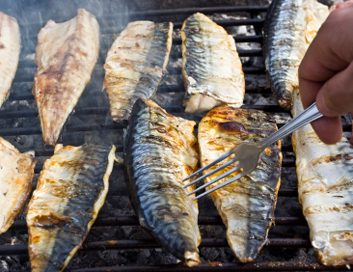Nutrition: The joys of an overlooked fish’mackerel
One of the simple pleasures of going ‘home’ to Prince Edward Island for a week is the wharf located just

One of the simple pleasures of going ‘home’ to Prince Edward Island for a week is the wharf located just five minutes down the road. On a hot summer’s day, kids jump into the cool Atlantic, visitors snap photos of colourful marker buoys and blue herons stand patiently in the shallows waiting for dinner to swim by.
But the best part is the fresh fish shop’actually more of a fish shack’where locals and tourists alike line up for still-hot lobster, shellfish picked from nearby ‘farms’ and whatever fish the deep-sea boats have brought in.
That’s where I rediscovered mackerel. While silvery-skinned mackerel is often listed among the fishes that are rich sources of omega-3 fatty acids‘the healthy fats that are good for our heart’it isn’t a fish that most people, including me, cook regularly. That’s going to change.
I purchased a dozen fresh triangular-shaped fillets. When it came time to grill the fish, we simply brushed them with a little olive oil, sprinkled on some fresh thyme and squeezed lemon juice overtop. They only took about five minutes over a medium hot grill, and the results were fabulous: even the skeptics in my family were converted to mackerel lovers! (For other suggestions on how to cook mackerel, see “The best fish to eat“.)
Another day at the wharf, I picked up mussels. They were quickly steamed as a side dish to pasta salad (watch for our September issue, on newsstands August 16, with ‘Mussels with Herbs and White Wine’ recipe from chef Paul Finkelstein). Mussels are rich in protein, vitamins and minerals, and only take five minutes or so to cook (try these three suggestions).




